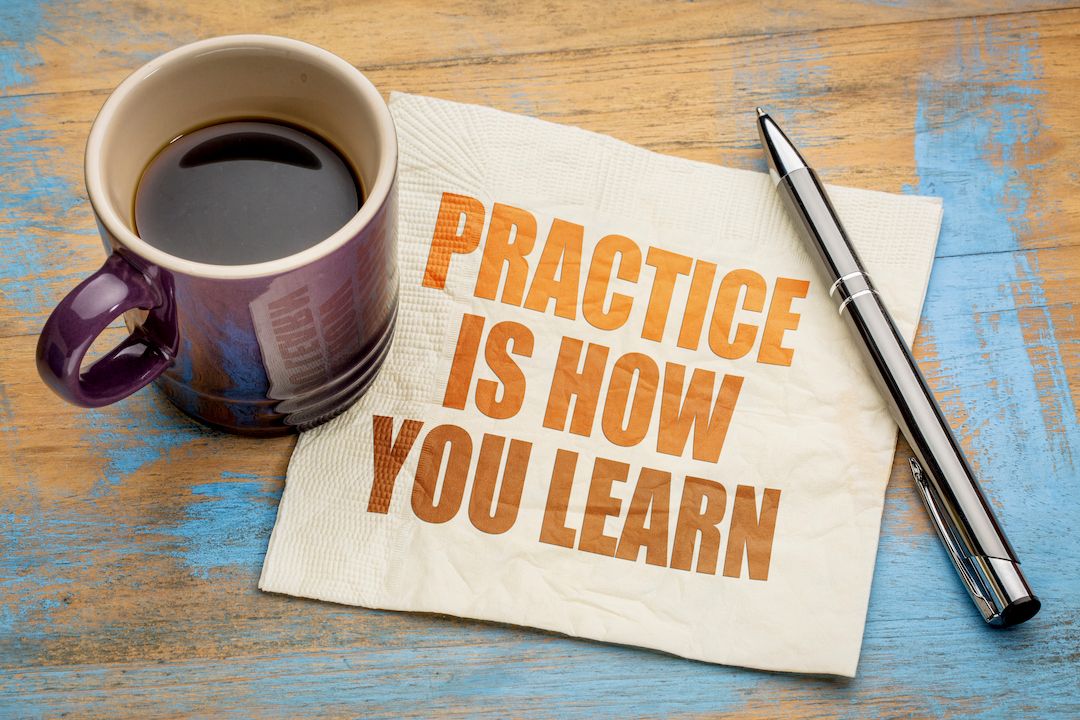Mastering Dutch Grammar:
- February 7, 2024
- By Tobias Woudt
Whether you’re planning a trip to the Netherlands, delving into Dutch literature, or simply connecting with Dutch-speaking friends, mastering Dutch grammar is the key to effective communication.
In this article, we’ll explore essential Dutch grammar rules, provide numerous real-life examples with English Translations, highlight common challenges faced by learners, and offer effective strategies to conquer the intricacies of the language.
Dutch, a West Germanic language, is spoken by millions around the world. It’s easy to join them today!

Table of Contents
Dutch Grammar Essentials: Understanding the Fundamentals
Navigating The Gender Maze

Dutch articles can be tricky for learners, especially when it comes to determining the gender of nouns. Unlike English, which has only one definite article (“the”), Dutch has two (“de” and “het”), and choosing between them depends on the gender of the noun.
Challenging Aspect: Mastering the gender of nouns and selecting the correct definite article.
Examples:
De tafel (The table) – De is used because “tafel” is a feminine noun.
Het huis (The house) – Het is used because “huis” is a neuter noun.
Noun Gender: The Art of Assignment

Assigning gender to nouns (masculine, feminine, or neuter) is a unique feature of Dutch grammar. This aspect is crucial, as it influences article choice and adjective agreement.
Challenging Aspect: Grasping the gender of nouns and adapting adjectives accordingly.
Examples:
De zon (The sun) – Feminine
De stoel (The chair) – Masculine
Het boek (The book) – Neuter
De tafel (The table) – Feminine
Het raam (The window) – Neuter
Plural Forms: Tackling Irregularities
Forming plurals in Dutch involves adding -en or -s to the singular noun, but irregularities exist. Knowing the correct plural form is essential for constructing accurate sentences.
Challenging Aspect: Memorizing irregular plural forms and understanding pluralization rules.
Examples:
De auto (The car) – De auto’s (The cars)
Het huis (The house) – De huizen (The houses)
De boom (The tree) – De bomen (The trees)
Het kind (The child) – De kinderen (The children)
Adjective Agreement: Harmonizing with Nouns
Adjectives in Dutch change based on the gender and number of the noun they describe.
This agreement can be challenging, particularly for learners not accustomed to noun-adjective agreement.
Challenging Aspect: Adjusting adjectives according to the gender and number of the associated noun.
Examples:
De grote bloem (The big flower) – Grote agrees with the feminine noun “bloem.”
Het oude huis (The old house) – Oude agrees with the neuter noun “huis.”
De snelle auto (The fast car) – Snelle agrees with the masculine noun “auto.”
Verb Conjugation: Navigating Through Variations

Dutch verb conjugation involves variations based on the subject pronoun and tense. While regular verbs follow patterns, irregular verbs require special attention.
Challenging Aspect: Memorizing irregular verb conjugations and mastering tense variations.
Examples:
Ik lees een boek. (I am reading a book.)
Zij speelt piano. (She plays the piano.)
Wij hebben een huis. (We have a house.)
Ik ben (I am), Jij hebt (You have), Hij komt (He comes)
Word Order: Structuring Sentences Effectively
The typical Dutch word order (Subject-Verb-Object) is similar to English, but the placement of adverbs can be different.
Understanding when and where to place adverbs in a sentence is crucial for conveying meaning accurately.
Challenging Aspect: Grasping the nuances of adverb placement in different contexts.
Examples:
Ik lees een boek in de bibliotheek. (I am reading a book in the library.)
Zij gaat snel naar huis. (She quickly goes home.)
De hond speelt buiten in de tuin. (The dog plays outside in the garden.)
Additional Challenges in Dutch Grammar:

Modal Verbs and Auxiliaries:
Modal verbs and auxiliaries are important elements in the grammar of many languages, including Dutch. These terms refer to specific types of verbs that serve particular functions within a sentence.
Modal Verbs
Modal verbs are auxiliary verbs that express the mood of a verb. They are used to convey the speaker’s attitude, ability, necessity, permission, or probability regarding the action of the main verb in the sentence. Modal verbs in Dutch include:
Moeten: Must/Have to
Example: “Ik moet studeren.” (I must study.)
Kunnen: Can/To be able to
Example: “Hij kan zwemmen.” (He can swim.)
Willen: Want/To want to
Example: “Zij wil helpen.” (She wants to help.)
Mogen: May/To be allowed to
Example: “Jij mag gaan.” (You may go.)
Zullen: Shall/Will
Example: “Wij zullen winnen.” (We will win.)
Hoeven: To not have to
Example: “Je hoeft niet te rennen.” (You don’t have to run.)
Modal verbs are often used with the infinitive form of the main verb and help convey the speaker’s stance on the action.
Auxiliaries
Auxiliaries, also known as helping verbs, assist the main verb in a sentence. They are used to form tenses, voices, and other grammatical constructions. In Dutch, common auxiliaries include:
Hebben: To have
Example: “Ik heb gegeten.” (I have eaten.)
Zijn: To be
Example: “Hij is gekomen.” (He has come.)
Worden: To become
Example: “Het wordt warm.” (It is becoming warm.)
These auxiliaries are used in combination with the past participle of the main verb to form perfect tenses or passive constructions.
In summary, modal verbs express the speaker’s attitude or intention, while auxiliaries assist in forming various tenses and constructions. Understanding the usage of modal verbs and auxiliaries is crucial for constructing grammatically correct and nuanced sentences in Dutch.
Prepositions and Cases:
Dutch grammar uses prepositions that govern specific cases, making it essential to understand the relationships between words.
Prepositions
Prepositions are words that express relationships between elements in a sentence, often indicating the position, direction, time, or manner of an action.
In Dutch, prepositions are essential for conveying the spatial and temporal aspects of various situations. Common Dutch prepositions include:
Over: Over/Above
Example: “De kat springt over de muur.” (The cat jumps over the wall.)
Onder: Under/Beneath
Example: “De sleutels liggen onder de krant.” (The keys are under the newspaper.)
Voor: In front of/Before
Example: “Wij wachten voor het restaurant.” (We are waiting in front of the restaurant.)
Achter: Behind
Example: “Het huis staat achter de bomen.” (The house is behind the trees.)
Bij: Near/Next to
Example: “Mijn vriendin woont bij het park.” (My friend lives near the park.)
Tussen: Between
Example: “Zij zit tussen haar ouders.” (She is sitting between her parents.)
Cases
Unlike some languages, Dutch does not have a complex case system like German or Latin.
However, it does have a system of noun and pronoun forms that can change based on their grammatical function in a sentence. The primary cases in Dutch are:
- Nominative Case: Used for the subject of a sentence.
Example: “De kat slaapt.” (The cat is sleeping.)
- Accusative Case: Used for the direct object of a sentence.
Example: “Ik zie de zon.” (I see the sun.)
- Dative Case: Used for the indirect object of a sentence.
Example: “Ik geef haar een cadeau.” (I give her a gift.)
- Genitive Case: Used to show possession or association.
Example: “Het boek van mijn vader.” (The book of my father.)
While Dutch nouns and pronouns don’t change significantly in form between cases, there are some variations, especially with possessive pronouns and articles.
Understanding the function of cases is crucial for constructing grammatically correct sentences and expressing relationships between elements in Dutch.
Subjunctive Mood:
The subjunctive mood is a grammatical mood used to express various states of unreality, doubt, possibility, necessity, or hypothetical situations.
In Dutch, the subjunctive mood is not as distinct as in some other languages, and its use is somewhat limited. However, it is still employed to convey certain unreal or hypothetical conditions.
The subjunctive mood is mainly observed in the following situations:
- Expressing Hypothetical or Unreal Situations:
The subjunctive mood is used to describe situations or conditions that are contrary to reality, hypothetical, or unlikely to happen.
Example: “Als ik geld had, zou ik reizen.” (If I had money, I would travel.)
- Polite Requests or Suggestions:
In more formal or polite language, the subjunctive mood may be used when making requests or suggestions.
Example: “Mag ik alstublieft uw naam weten?” (Could I please know your name?)
- Expressions of Doubt, Wish, or Desirability:
The subjunctive can be employed to convey doubt, express wishes, or discuss desirability.
Example: “Het zij zo.” (So be it.)
In Dutch, the subjunctive mood is often formed using the past tense of the verb, and the conjunction “als” (if) is frequently used to introduce the unreal or hypothetical condition.
While the subjunctive mood is not as prevalent in Dutch as in some other languages, recognizing its use is important for understanding nuanced expressions and conveying specific shades of meaning.
Separable Verbs:
Separable verbs, also known as “phrasal verbs” or “compound verbs,” are a distinctive feature of Dutch grammar.
These verbs consist of a main verb and a separable prefix. The prefix is a short word, often an adverb or preposition, that is attached to the main verb when used in a sentence.
However, in certain sentence constructions, the separable prefix can detach from the main verb.
The key characteristic of separable verbs is that the separable prefix splits off from the main verb when the verb is conjugated, and the two parts of the verb are positioned in different parts of the sentence. Here’s an example to illustrate:
Example:
Separable Verb: “Opstaan” (to get up)
Infinitive: “Ik sta op om 7 uur.” (I get up at 7 o’clock.)
Conjugated: “Ik sta op.” (I get up.)
In the example above, “op” is the separable prefix, and it is attached to the main verb “staan” in the infinitive form. When conjugated, the separable prefix is detached and placed at the end of the sentence.
More Examples:
Infinitive: “Zij komt langs.” (She comes by.)
Conjugated: “Zij komt langs om 3 uur.” (She comes by at 3 o’clock.)
Infinitive: “Wij gaan uit.” (We go out.)
Conjugated: “Wij gaan uit vanavond.” (We are going out tonight.)
Infinitive: “Hij zet neer.” (He puts down.)
Conjugated: “Hij zet het neer.” (He puts it down.)
Understanding separable verbs is essential for constructing grammatically correct sentences in Dutch.
When using separable verbs, it’s important to know when the separable prefix should be attached to the main verb and when it should be detached, based on the sentence structure and verb conjugation.
Effective Strategies for Learning Dutch Grammar:

Immersive Learning:
Immersive learning refers to an educational approach that aims to create an environment where learners are deeply engaged in the subject matter, often by simulating real-world experiences.
The goal is to provide a more interactive and hands-on learning experience, allowing individuals to actively participate, explore, and internalize knowledge or skills.
In the context of learning the Dutch language and grammar, an immersive approach may involve surrounding learners with the language in real-life situations, such as through conversations, cultural experiences, or language immersion trips, to accelerate language acquisition by encouraging practical use and application.
Interactive Courses:
Within the context of learning Dutch grammar, interactive courses can play a crucial role in making the learning experience more effective and engaging.
These interactive courses can include, grammar games & exercises, language labs, Role-Playing Scenarios, proper feedback mechanisms and much more.
By incorporating these interactive elements into Dutch grammar courses, learners are more likely to stay motivated, retain information, and develop practical language skills. The interactive approach enhances the overall language learning experience, making it more enjoyable and effective for acquiring Dutch grammar proficiency.
Language Apps:
Utilize language learning apps that focus on Dutch grammar. Many apps provide engaging exercises, quizzes, and real-life examples.
We suggest to our students that want to practice their Dutch grammar further outside of our lessons, the Busuu app, which is more specialised in Dutch grammar exercises than other apps available on the market.
Grammar Guides and Books:
Grammar guides and books are effective for learning Dutch grammar because they provide:
- Comprehensive Content: Covering various grammar aspects in one resource.
- Structured Learning: Presenting information in an organized, step-by-step manner.
- Detailed Explanations: Offering in-depth explanations with examples.
- Practical Examples: Demonstrating real-life language use.
- Reference Material: Serving as a handy reference for learners.
- Clear Formatting: Using visuals for better comprehension.
- Practice Exercises: Reinforcing learning with hands-on exercises.
- Self-Paced Learning: Allowing learners to progress at their own pace.
- Supplementary Resources: Complementing other learning tools.
- Progress Tracking: Providing a sense of achievement and advancement.
At Tobian Language School we suggest the following ones:
“Van Start” for beginners (A1 – A2 Level)
“De sprong” for intermediate learners (A2 – B1 Level)
“De finale” for advanced learners (B1 – B2 Level)
Regular Practice:

Regular practice helps reinforce the grammar concepts learned, making them more ingrained in memory. Repetition is key to mastering the rules and structures of Dutch grammar.
This type of practice allows learners to consolidate their knowledge by applying grammar rules in different contexts. It bridges the gap between theoretical understanding and practical application.
And, with regular practice, learners can identify specific grammar areas where they struggle. This self-awareness enables targeted focus on challenging concepts for improvement.
In turn, practice builds confidence in using Dutch grammar. As learners become more familiar with the rules, they feel more assured in their ability to communicate accurately.
We also explain in detail how to learn Dutch in a broader sense here.
Conclusion
Mastering Dutch grammar is a gradual process that requires dedication and consistent effort.
By understanding the unique aspects of Dutch grammar, utilizing practical examples, and incorporating effective learning strategies, learners can navigate the challenges and progress toward fluency.
Immersing oneself in the language, embracing interactive learning tools, and engaging with native speakers will enhance the overall language acquisition experience.
Ready to take the next step? Explore our Dutch language courses and start your journey to fluency today.

Tobias is a polyglot, traveller and founder of the Tobian Language School.
